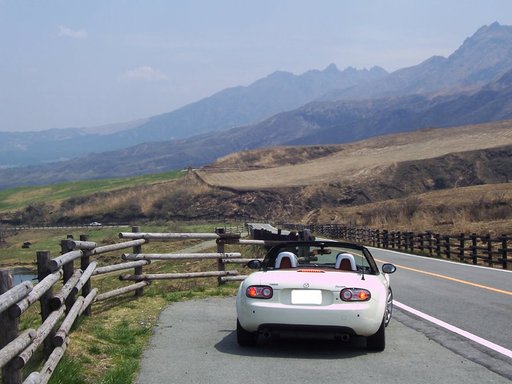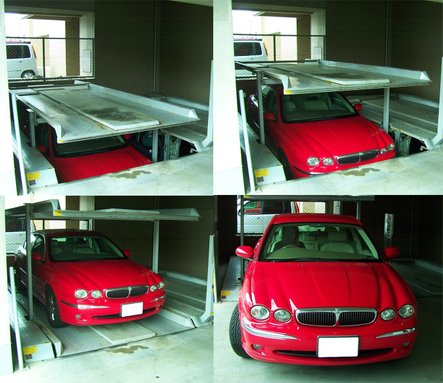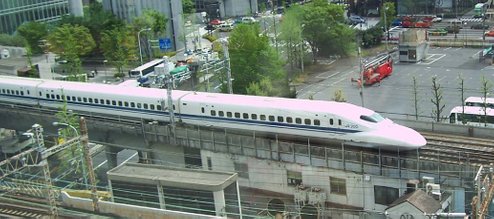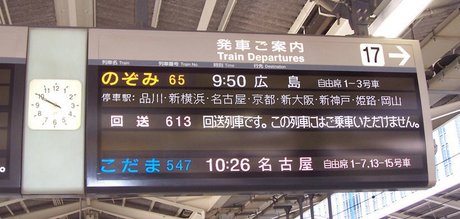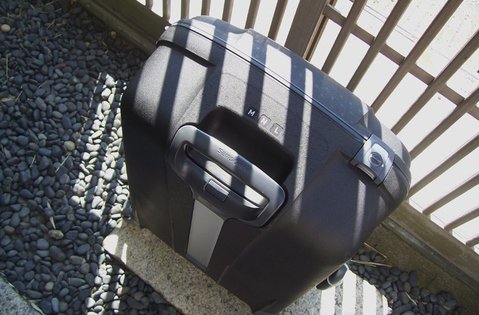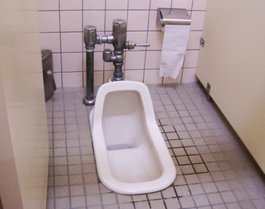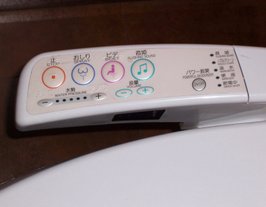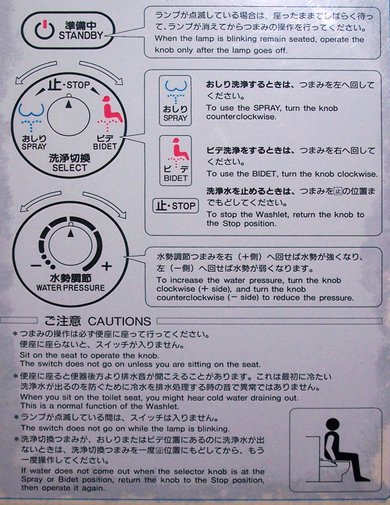WANDERLUST
GETTING AROUND - JAPAN
I did not go by either parachute or submarine, but otherwise I think I used lots of different means of transportation. My own two feet (a lot), bicycles, cars, busses, local trains, metro, trams, Shinkansen (a lot), ferries, planes ...
CARS. I am no car enthusiast. I don’t even own a car myself. I live right in the heart of Copenhagen where it’s faster to walk from one end of the city centre to the other than finding a place to park. But the Japanese have great cars. And they seemed to change them often. In Denmark you see (and hear!) old bangers coming down the road regularly. I didn’t see that in Japan. And my friends drive the coolest cars I have seen in a very, very long time. In the pictures above is a Mazda MX-5 near Mount Aso in central Kyushu and my friend retrieving her Jaguar from the underground deck in Hamamatsu. That was another first for me. I had not seen this system before (maybe I don't get around that much, after all?) It reminded me slightly of a system we had on the old car ferries in Denmark before we "paved" the straits and sounds with bridges. Then, cars drove onto a ramp and were hoisted up to another level by a hydraulic system, leaving room for more cars beneath. This parking lot outside an apartment block in Japan was quite clever. A brilliant system, and a beautiful vehicle!
A few differences from what I am used to: All taxis have automatic doors. The rear door on the left opens and closes automatically. So keep your extremities close to your body or you risk getting squeezed by the door.
TRAINS. As far as I understand, the word 'shinkansen' means "new trunk line", but I never heard anyone use this term in English. Instead it was the 'bullet train'. Around 25.000 horsepower, in other words: d*** fast hoof-beats!
I have been in high speed trains before, e.g. the French TGV which is about 5 to 10 per cent faster than the Shinkansen, and yet travelling by train in Japan felt faster. Maybe because we were in densely populated areas along most of the route and the buildings were very close to the rails. I had a distinct feeling the train speed must be faster than a plane travels on the ground right before take off, and I reminded myself to look it up. I got away from that again, until today. The take off speed is 260 km/h for a Boeing 757, 290 km/h for an Airbus A340 and it was 360 km/h for a Concorde. The Shinkansen travels at around 300 km/h. It took a little while for me to get used to the speed with which the buildings and landscape came flying by. Or rather, the other way around! No wonder they have all those safety railings at the platforms. There was a strong turbulence and suction when these trains passed.
There seemed to be only one thing these trains did not have and that was room for luggage. In a carriage with room for around 60 people there would be space for 4-6 suitcases. A large number of the passengers in the Shinkansen were business men who only brought a small briefcase. Still, I knew there must be something I had overlooked. I later found out many people sent their luggage to their destination the day before they went, themselves. As I moved around so much all the time, I couldn’t do this, or my suitcase and I would have made two completely separate travels. Incidentally, I am sometimes asked why the domain name on my website is emenel. Look at the photo of the suitcase and say my three initials out loud. Then you'll know.
I like travelling by train. I can relax, read, listen to music or talk to my neighbours. Most Japanese people I talked to on the trains seemed to automatically assume I was American. When they heard where I was from, some of them behaved as if they had just caught a rare butterfly. And I found out what most of them associated with Denmark: (Hans Christian) Andersen or Danish pastry.
BATHROOMS - JAPAN
Public convenience, restroom, bathroom, toilet, lavatory, men’s / ladies’ rooms, etc. Call it whatever you like. I prefer to call a spade a spade. The best thing was that all those I saw were free of charge. I don’t mind paying, which is what we often have to in Denmark, it’s just that when I need 'to go' I don’t always seem to have the change I need for the lock, and that’s a nuisance. None of that in Japan.
I came across two main types: either the very simple type with just a porcelain bowl in the floor, or the state of the art, high tech models with a heated seat, bidet function, drier, a choice of sound effects (anything from the ocean or Mozart to a simple flush effect) and in one case LED light.
I do not think a pilot’s license for a small aircraft is strictly necessary in order to work the controls, but it might be an advantage.
The control panel was slightly intimidating for someone like me, who really just wanted the core performance and none of the fancy stuff. As far as I understood you had a choice of temperature, volume, pressure and direction of the water and air. Anything from a squirt to a jet. And the text was also in braille. Often a manual would be posted on the wall, and I recommend studying it well ahead of the time you would actually need the service.
The instruction sheet is from the bathroom of my hotel room the first night in Japan.
In a restaurant near Hiroshima there was not only the panel next to the bowl, but also a remote control on the wall. I tried to figure out why you would need a remote control in a cubicle of less than one square meter, where you could reach everywhere, anyway. I suppose you could take the remote with you and give your friend, who went in there after you, a real surprise!
© emenel 2020
